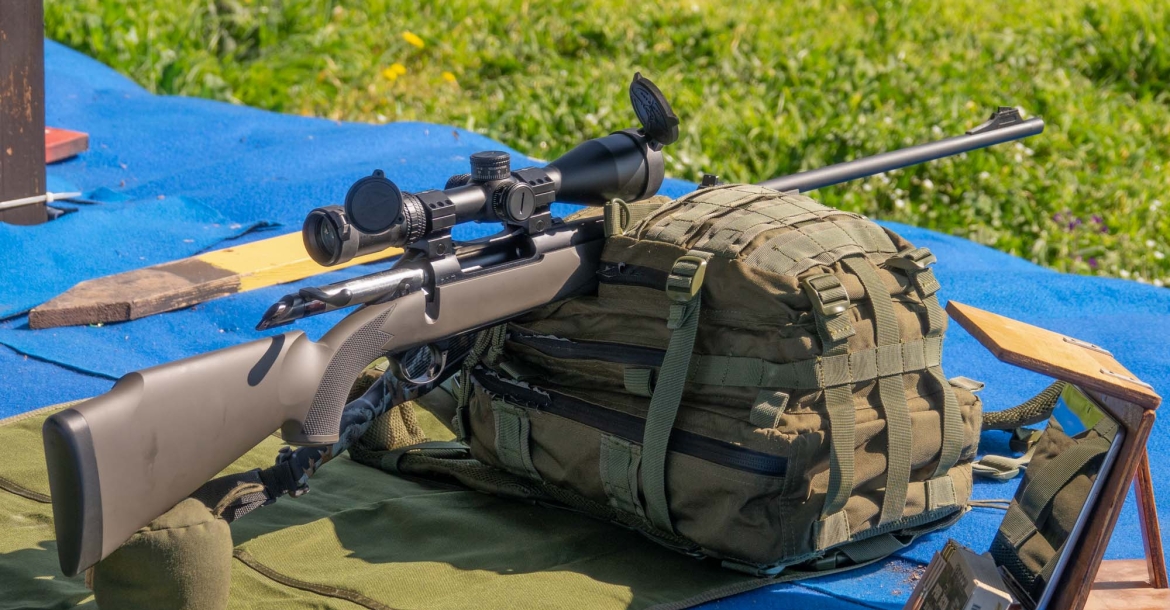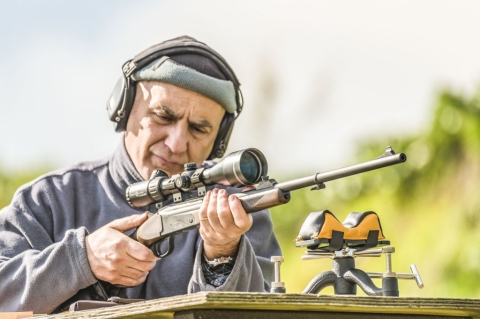Sabatti Saphire: a surprising hunting carbine
I've always wondered up to which distance I could stay sub-MOA with a light bolt action hunting carbine. With the Sabatti Saphire I've got the answer.
To answer this question I choose a Sabatti Saphire carbine, a rifle characterized by a light weight and a very traditional design, perfect for the purpose of the test I wanted to perform.
Rifle weight is a very important parameter when hunting, as it impacts the endurance of the hunter who, already burdened by a backpack loaded with gear, must then also carry the dead animal. The tested rifle has adjustable iron sights as well, and having open sights can save a hunt, were the scope to suffer any damage.
The Sabatti Saphire was tested as it came from the factory, without any modification, not even in trigger weight adjustment. The chambering, a common .308 Winchester. The barrel of the Sabatti Saphire has Sabatti's Multi Radial Rifling (MRR), that offers performances well know and appreciated worldwide.

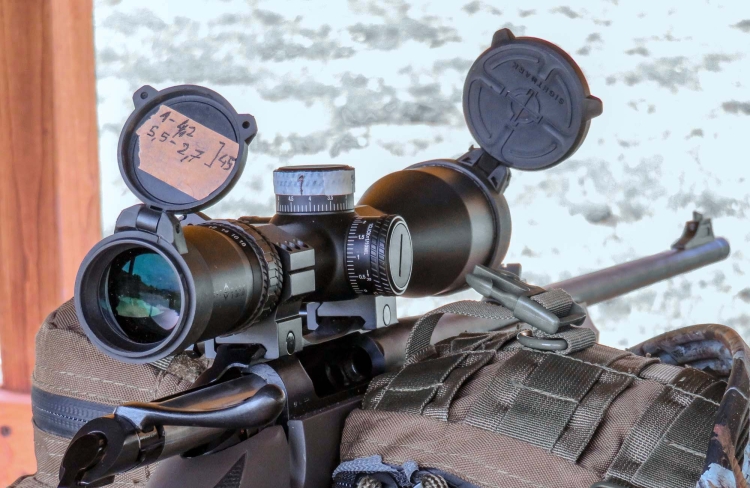
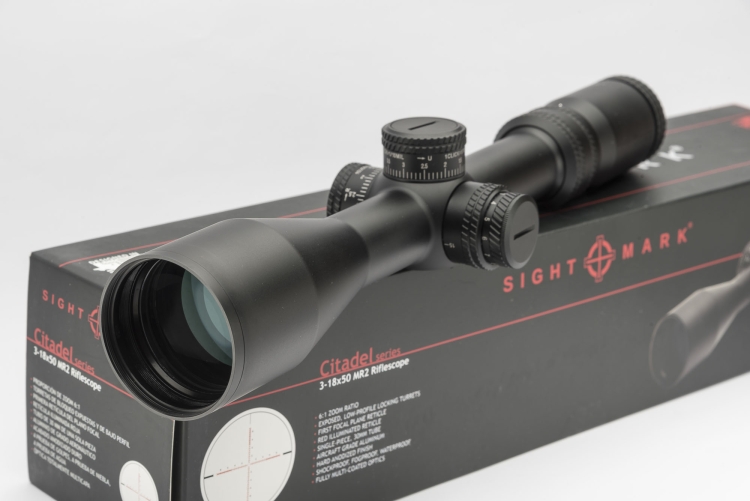
The scope is a Sightmark Citadel 3-18x50 with an MR2 illuminated, FFP, MIL reticle, MIL turrets, and parallax adjustment on the third turret. This is an excellent intermediate level scope, for professional, sporting or hunting purposes.
The rifle with scope and sling weighs 9.7 lbs., almost featherweight, and far lighter than any hunting carbine with a varmint barrel.
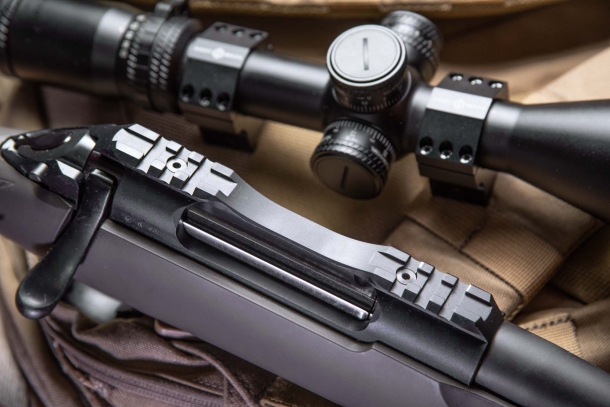
The Picatinny rail is machined on the receiver.
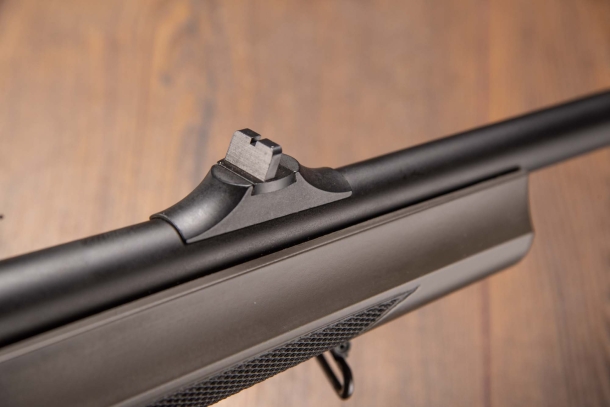
The open rear sight can be adjusted for windage.

The front sight can be adjusted for elevation.
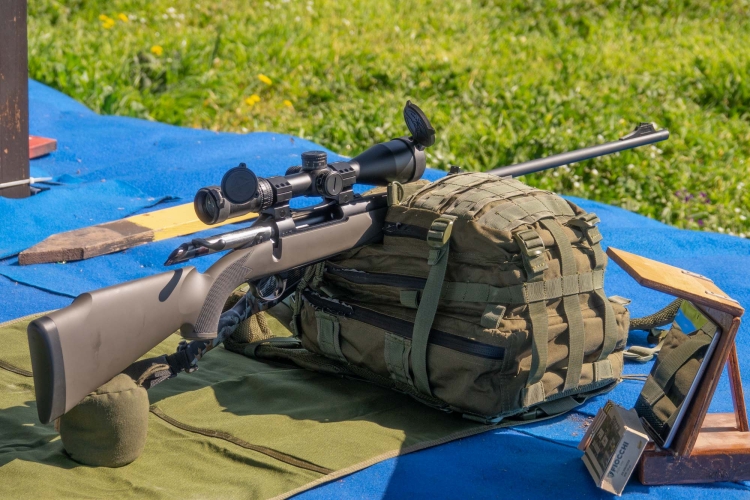
All tests have been performed on a range, but always with the gun just resting on the backpack, either prone or sitting: keeping these shooting positions is important for a realistic simulation of a hunt.
The rifle was tested at two distances: 100 and 548 meters (110 and 600 yards). 600 yards are well beyond any "ethical" hunting distance for a .308 Winchester, but is perfect to ascertain the carbine's accuracy potential.
Sitting or prone, shooting from the backpack with such a light carbine, I was always careful to keep a solid contact with the shoulder. The shooting hand was positioned firmly on the grip, to keep a correct angle on the trigger. The hand too low, with the thumb gripping the stock, leads to a wrong contact with the trigger resulting in a heavier pull.
On the forward end, I used all the available handguard length, careful not to let the sling stud touch the backpack, allowing the gun to recoil as linearly as possible. On the rear end, I used a small commercial shooting bag, perfect for hunting. A homemade solution for a rear bag, still absolutely valid for hunting, is a double sock filled with softair BBs.
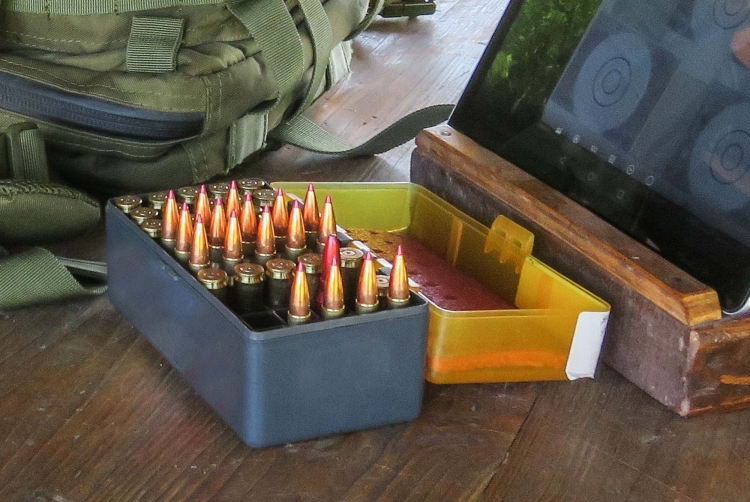
This being an informal test, I didn't try to optimize a load for the Saphire, and just used the cartridge I normally hunt with in my .308 Winchester Tikka T3 Tactical, with a 20" barrel: 168 grain Hornady ELD-M bullet, 42.0 grains of Vihtavuori N135 powder, CCI VR2 primers and COAL of 71.20mm (2.8031")
In the Sabatti Saphire I got a V° of 2740 fps (835 m/s) thanks also to the 24" MRR barrel.
The barrel diameter of 0.63" (16mm) makes the Saphire a very light barrelled rifle, unsuited to long shooting sessions. To avoid heating up the barrel too much, loosing accuracy, I focused my test on 3-shot groups: after all, this is its magazine capacity and, when hunting, you shoot from a cold barrel.
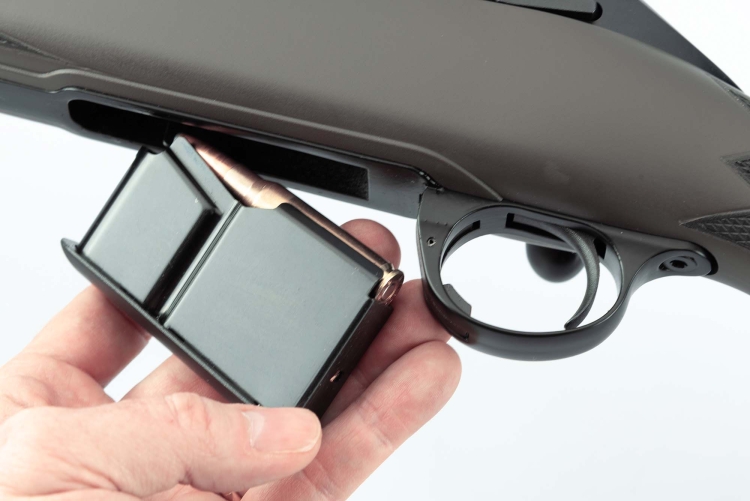
The Saphire uses sheet metal magazines, but Sabatti is transitioning to polymer magazines on all models.
Inserting the magazine into the rifle is neither instinctive nor fast: it has a habit of snagging unless you keep the magazine release depressed to help keep magazine insertion fluid.
Several times, trying to reload the gun by inserting a cartridge directly into the ejection port, I've met with feeding issues: this because the cartridge rests on the magazine's lips on a downward slant, with the bullet not in line with the chamber, so that, by pushing the bolt forward, the bullet nose snags against the receiver. At least, this is what happened with my reloads.
On the other hand, feeding from the magazine proved very reliable, even when actuating the bolt in a hurry. Just by making the feeding ramp a tad longer could solve the issue.
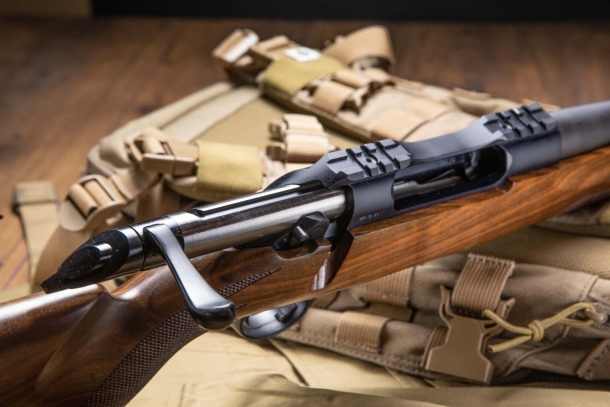
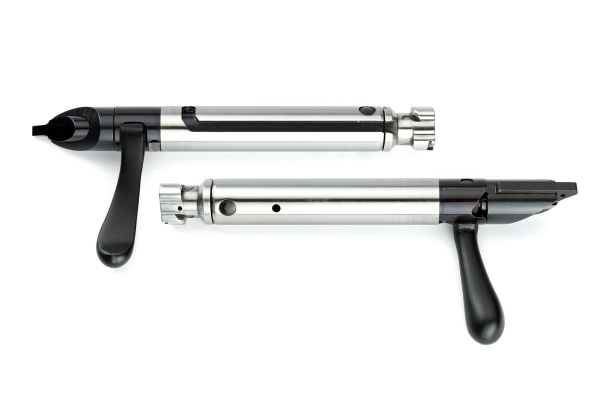
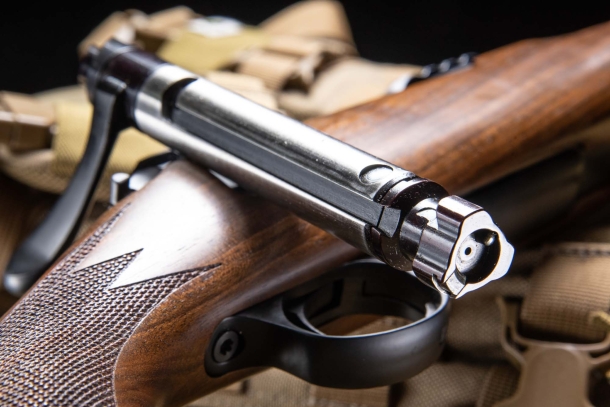
The three-lug bolt is superbly finished. Perfect for a target rifle, but on a hunting carbine the three lugs make the bolt a tad stiffer to actuate, which is not always ideal, as a fast follow up shot may be necessary.
It just needs practice, though.

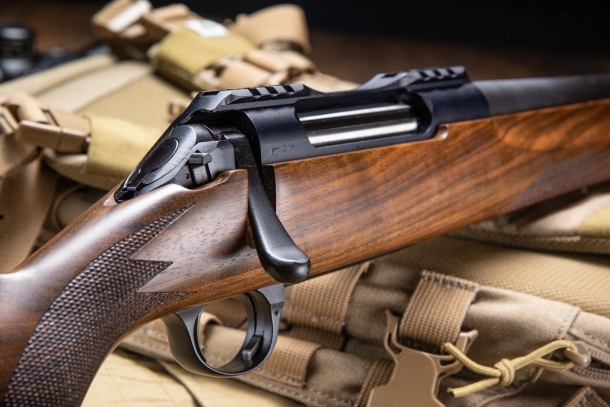
The safety is just behind the bolt handle.
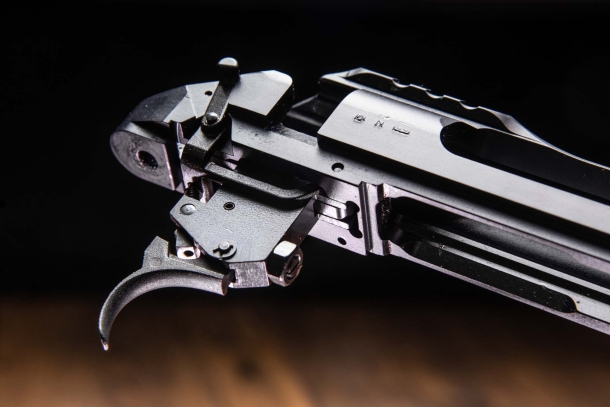
The Saphire trigger group is very good and can be adjusted for pull weight.
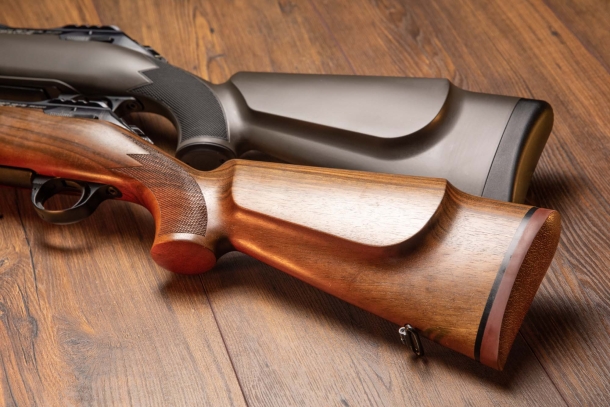
The stock has a traditional design with a wide cheek rest.
While accustomed to heavier guns with a muzzle brake, I needed very little time to adapt to the kick of the gun: sharp, but far from punishing. Sabatti offers their "Jet Brake" muzzle brake as an option, but unfortunately it wasn't installed on the test carbine.
It's a shame Sabatti rifles use a footprint and measurements that are not compatible with the Remington 700 world, precluding the owner acces to an immense choice of aftermarket options.
Given the very light weight of the carbine, the shooting position and backpack rest, not exactly conductive to match-grade accuracy, the resulting groups can be considered very good: well below 1 MOA both at 110 and 600 yards.
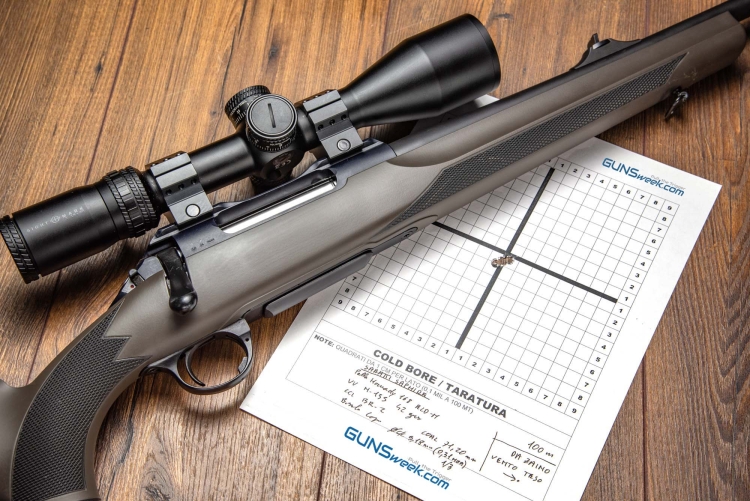
3 shots at 110 yards
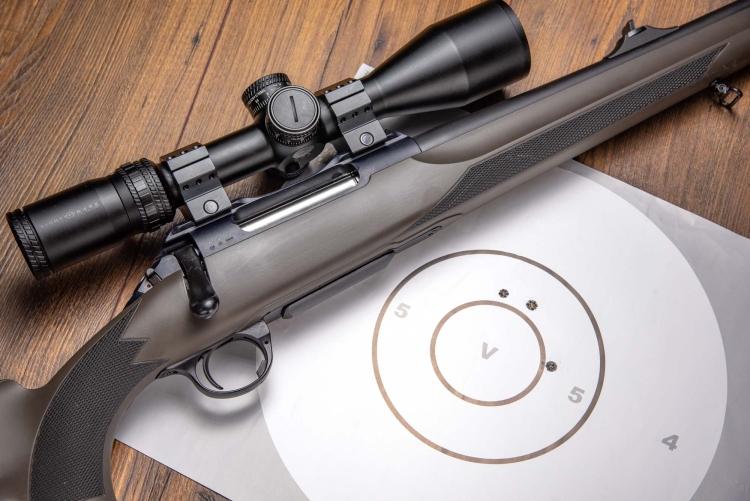
Best 3 shot group at 600 yards: just 0,35 MOA

5 three-shot groups at 600 yards
At 110 yards, after zeroing the scope, I got a 0.36" (9.18 mm ) group of 0.31 MOA
The nice surprise came shooting at 600 yards though, on 5 F-Class targets, three shots per target:
- Target 1: 4.6" (11.6 cm) 0,72 MOA
- Target 2: 2.37" (6,01 cm) 0,37 MOA
- target 3: 2.2" (5,6 cm) 0,35 MOA
- Target 4: 5.15" (13,09 cm) 0,82 MOA
- Target 5: 2.5" (6,37 cm) 0,39 MOA
All groups are well within the vitals of any game.
Tikka, Remington, Sako, Ruger, ... all great names with a nice product lineup, but this "commonplace" (figuratively speaking) Sabatti Saphire carbine, with a light 0.63" pencil barrel really was a surprise.
I'm very happy with it, very happy with the results of a test performed in very informal conditions. Those who know me at the range couldn't but notice my wide grin.
I'm very excited with the Saphire: it does its job perfectly, it's light, very accurate and will give a lot of satisfaction to those carrying one on their shoulder to a hunt.

The author clearly appreciating the Sabatti Saphire at the end of the 600 yards test.

The Sabatti Saphire is available with a wood or polymer stock, the latter also in a thumbhole version.

